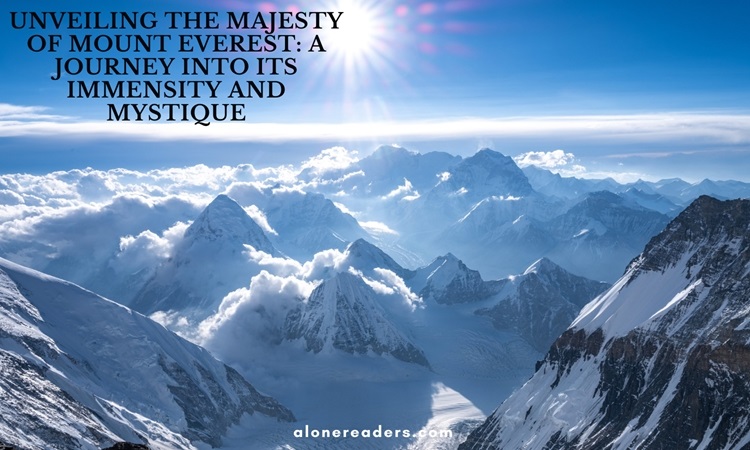
Mount Everest, a name synonymous with the epitome of mountainous grandeur, has captivated the hearts and imaginations of explorers, adventurers, and nature enthusiasts alike. Rising regally above the Earth's surface, Everest is not just a geographical entity; it's a symbol of the awe-inspiring power of nature and the enduring spirit of human endeavor. This article endeavors to explore the vastness, height, and the enigmatic qualities of Mount Everest that continue to intrigue and challenge humanity.
Standing at a colossal height of 8,848.86 meters (29,031.7 feet), as measured in 2020, Mount Everest is the tallest mountain on Earth, measured from sea level. However, its vastness extends beyond mere height. The mountain is part of the Himalayan range in Asia, lying on the border between Nepal and the Tibet Autonomous Region of China. The area surrounding Everest, including the neighboring peaks and the valleys, comprises an extensive, rugged landscape spanning several miles.
The vastness of Everest is also reflected in its climatic diversity. The base of the mountain is wrapped in lush, verdant forests, while its mid-section is characterized by alpine conditions. As one ascends, the vegetation thins, giving way to the icy, barren, and oxygen-deprived death zone near the summit. This climatic variation supports a wide range of flora and fauna, making Everest not just a mountaineering marvel but also a biodiversity hotspot.
Mount Everest has been revered by local populations long before it became known to the outside world. Known as "Chomolungma" in Tibet and "Sagarmatha" in Nepal, the mountain holds deep cultural and spiritual significance. It's intertwined with the myths, folklore, and religious beliefs of the region, adding layers of mystery and reverence to its physical presence.
The first recorded attempt to climb Everest was in 1921, and it wasn't until 1953 that Sir Edmund Hillary and Tenzing Norgay achieved the feat of reaching its summit. Since then, Everest has been a symbol of ultimate adventure and exploration. The mountain's harsh and unpredictable weather, along with the physical and psychological challenges of the climb, add to its enigmatic allure, drawing climbers from all over the world.
Mount Everest's height is not a constant figure. Geological activities such as earthquakes and the shifting of tectonic plates mean that Everest is slowly growing. The mountain is also subject to natural erosion processes, adding to the complexity of accurately measuring its height.
Over the years, numerous expeditions have been undertaken to measure the exact height of Everest. The most recent official measurement in 2020, a collaborative effort between Nepal and China, established its current height at 8,848.86 meters. These expeditions are not only a testament to human curiosity and scientific endeavor but also highlight the dynamic and ever-changing nature of our planet.
Mount Everest, with its immense height, vast geographical expanse, and mysterious allure, continues to be a symbol of the majesty of our natural world. It challenges our understanding of geography, pushes the limits of human endurance, and inspires a sense of wonder and respect for the natural world. As we continue to explore and understand this colossal mountain, we are reminded of the small but significant place we hold in the vast tapestry of Earth's landscape.